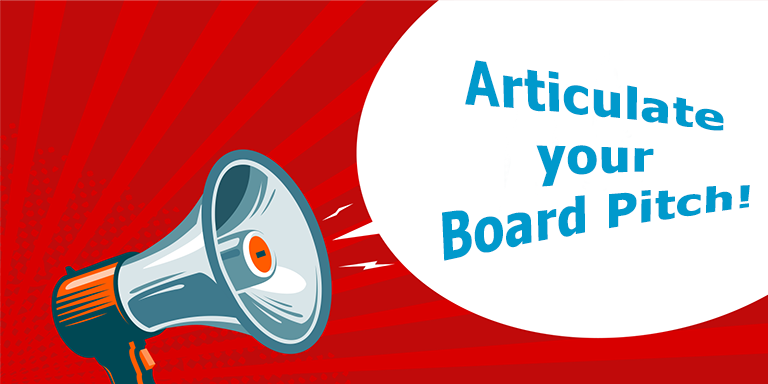4 keys to develop Professional Connections

I can not stress enough the value of your personal and professional networks and connections in gaining a board seat. I am sure it will not surprise you that at least 65% of people are appointed to a board via a personal or professional connection. So, if you want a board appointment or board seat, you need to know how to develop professional connections. Here are my 4 keys to help you do just that.
Key 1 – Be clear about your motivations when developing these professional connections
Individuals who successfully develop professional connections are persistent. Persistence comes through strong motivations and an internal drive. Motivated people identify opportunities everywhere: at dinner parties, on planes, in the office, at corporate events, and even at children’s community events.
To do this effectively, you must be clear about your motivation for doing so. You should acknowledge that there are two kinds of human motivation, one with positive and one with negative implications for developing these connections.
- Intrinsic (positive) motivations: are the result of internal stimuli. You engage in a behavior because you find it personally rewarding, enjoyable or even challenging. Successful independent board directors are usually driven by a desire to help the organization, not by the stature that may come with the role. This behavior has positive spin-offs because the connections made are legitimate and authentic. Ultimately, these kinds of relationships reap positive results, including introductions that open doors to new board opportunities or access to those you may have been targeting.
- Extrinsic (negative) motivations: are the result of external stimuli. You engage in a behavior to receive an external reward or avoid a negative consequence. For example, your main priority is to meet new people because you want them to help you achieve something, or you want a board seat because you feel it will help your social standing in the community or further your professional career. These negative motivations are self-serving and often seen as unattractive by those with whom you are trying to develop professional connections.
Don’t dismiss this seemingly small difference between the two types of motivation. It is important because one is likely driving one’s own individual interest. Be aware of this when interacting with those you meet, as it will be reflected in your language. It is essential that you are not seen as being extrinsically motivated.
Key 2 – Be authentic
Many aspiring board directors I speak to are utterly inauthentic in their approach. They misrepresent their experience level and pretend they have more to offer a board than they really do. As you can imagine, conversations based on this bravado usually go nowhere, ending in both parties being let down. If you are trying to develop professional connections, play to your strengths. But to do so, you must first know your strengths and what you can offer a board. Once you do, ask others with more experience than you for their advice. You should then have the basis of an authentic board pitch. A straightforward and authentic approach can appeal to literally thousands of people.
Key 3 – Be passionate
One of the top criteria that a Board Chair looks for in successful board candidates is passion. Board chairs are passionate about three things: their contribution to their board, what the organization does and what the organization is. They, in turn, look for and connect with people who share their or similar passions.
So, what exactly should you be passionate about? The truth is, it doesn’t really matter. I have seen an inexperienced but extremely passionate board member soften the most formidable board chairs. Whether your passion is for board service, the organization, the industry, what you do outside of work, or what you have to contribute, any of them can appeal to the right listener. Success lies in knowing what you are passionate about and how to articulate it.
Key 4 – Get your mantra right
This one is easy. Your mantra should be simple: “How can I help? How can I help? How can I help?”. This phrase needs to be buzzing around your head when you are looking to develop professional connections. You should constantly be thinking about the people you know, the knowledge you hold, and the industry-based skills and experience that might be useful to those you are trying to connect with.
This “how can I help” mantra is incredibly powerful when reaching out to those you wish to develop a connection with. Asking this question can be an easy ice-breaker. It allows you to identify the challenges they may be experiencing and then leverage your ability to assist. Asking how you can help also demonstrates that you are inquisitive and genuinely interested in contributing or collaborating. Once connected, this approach provides a pathway to stay in contact, generate new connections and develop future board opportunities.
A word of warning—wanting to help and helping are two very different things. Most successful leaders ensure they follow through, and so should you. The “how can I help” mantra may backfire if you don’t follow through on your promises, no matter how big or small.
What next?
Developing professional connections does not come naturally to most. However, getting out there, connecting, and conversing with new people will begin to make you feel more comfortable. You should start by conducting an audit of your current networks, identifying those you should nurture and where you should focus your time to develop new professional connections.
Related Articles
Board chairs seek passionate board members
Articulate your way to a Board Seat with a powerful Board Value Position
Networking can unlock board career opportunities – get yours in order
About the Author
David Schwarz is CEO & Founder of Board Appointments. He has over a decade of experience in putting people on boards as an international headhunter and recruiter. He has interviewed hundreds of directors and placed hundreds into some of the most significant public, private and NFP director roles in the world.







Responses